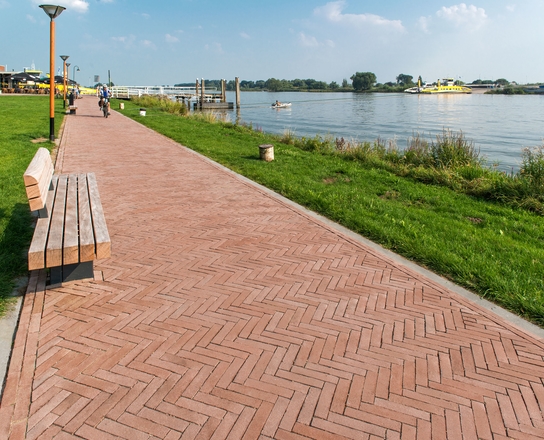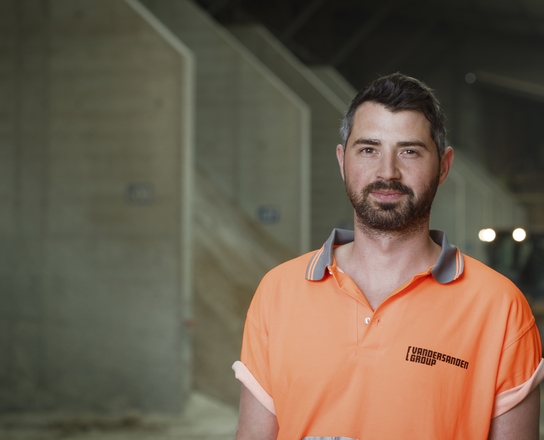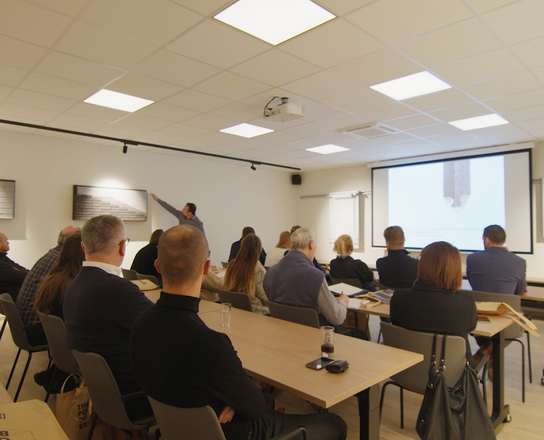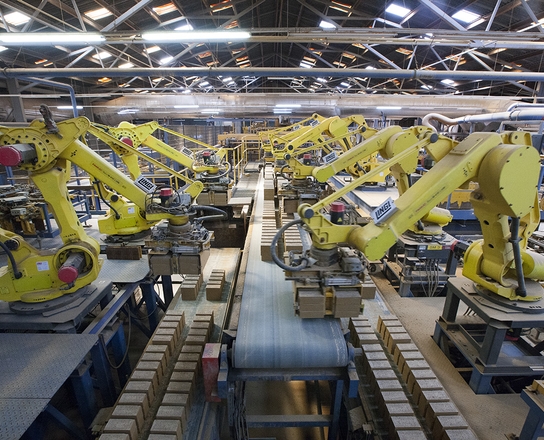Our environmentally friendly and energy-conscious production
At Vandersanden, we produce all of our facing bricks and pavers with the environment, and energy efficiency, in mind. We keep that focus in the design of our packaging and the transport of our products. Discover our sustainable approach
Extraction of raw materials
When extracting the raw materials , we make sure that:
- We only ever extract what we will use, so that we limit waste.
- We use raw materials efficiently.
- We follow voluntarily accepted standards relating to aspects of extraction and restoration of extraction areas .
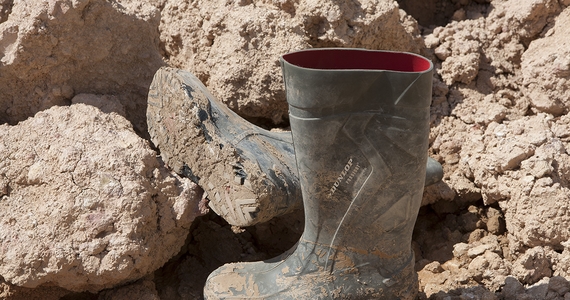
Using soil surpluses
But Vandersanden goes one step further. Sometimes, we also use the clay that is released from infrastructure works and construction projects. This way, we need to work with fewer extraction areas and we can offer a solution to the problem of surplus soil.We start by taking samples of the ground to examine whether or not it is suitable as clay soil. If it isn’t , then we can always reuse it as a filler when restoring clay quarries.
Energy consumption and emissions
Before our newly formed facing bricks can enter the kiln, they need to be dried. The drying process requires considerable energy. To save energy, we use residual heat (up to 200°C) to heat the drying rooms. The residual heat comes from our kilns or from our cogeneration plant. The use of residual heat is a major improvement that we have used for quite some time, even before the environmental standards were imposed. By using natural gas and installing filters in our chimneys, our emissions are some of the least polluting in the industry and well below the applicable standards.
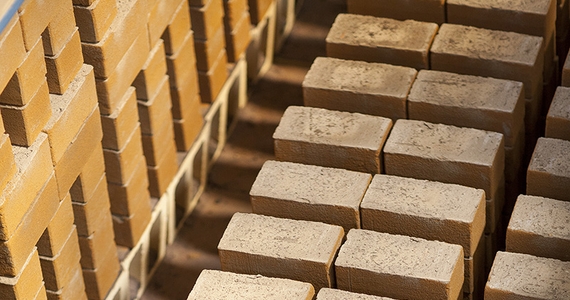
Water use and waste materials
The production of facing bricks and pavers requires large volumes of water. We use water as a raw material as well as to flush out the moulds. The ground water that we use in the process circulates in a closed circuit. We don’t discharge industrial waste water and are completely‘zero-discharge’.
We use only natural raw materials as the basis for our facing bricks and pavers – the production process does not generate any waste.
- We can reuse the clay in every phase of production.
- We achieve a return of 100 per cent: each kilo of raw material results in a kilo of brick.
- Misshapen bricks are manually removed and recycled.
- The only waste that leaves the plant is a limited quantity of packaging waste.
But even here, we take an environmentally conscious and energy aware approach to our products.
Ecological transport
In an effort to keep lorries off the roads, much research has gone into the opportunities offered by inland waterways.This involves looking not only at the configuration of the vessels, but also at intense collaboration in the construction sector.
Numerous manufacturers and construction partners have sites located close to the water, making efficient transport via the waterways easy to organise with outward and return journeys. Vandersanden is currently devising a plan to organise a hub in northern France for storing facing bricks and pavers destined for the French market.
It remains a challenge to keep the costs of this form of transport the same or only slightly higher than the costs of transport by road. However , even if the costs are10% higher, Vandersanden would be willing to utilise inland shipping and thereby invest in ecological transport of its products.
Green framing
We are installing green buffers around various production halls and stacking sites to preserve the green character of the environment and try to hide the plants from view as much as possible.
Clean clay storage
Our vehicles bring the clay straight to the right location in or next to the plant and we then use transport conveyors to sort the clay to the right stack immediately, by colour, which means there is no contamination from dust or mud.

